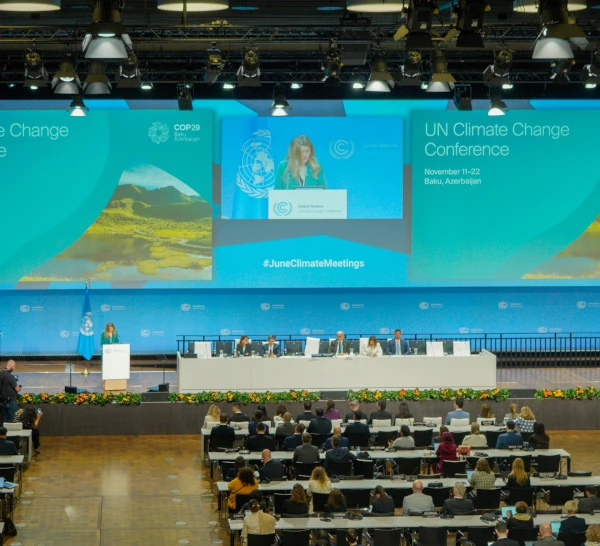The 29 UN Climate Change conference starts on November 11, in Baku, Azerbaijan with the challenge to “enhance ambition and enable action” pressured by the last year’s global temperature. According to Copernicus, September 2024 was the 14th consecutive month for which the global-average temperature exceeded 1.5°C above pre-industrial levels. An annual warming doesn’t mean a permanent breach of the Paris Agreement goal, but the increasing temperature raises concern between the COP 29 participants.
“The scenario is not good: the planet’s temperature is on a rise trajectory, and countries are not being able to respond to this with the necessary sense of urgency”, analyses Maria Netto, the executive director of Instituto Clima e Sociedade, the Brazilian member of RCF.
It isn’t clear to the Regional Climate Foundations leaders how this sense of urgency will be represented in COP 29, but the good news is that there is plenty of data and scientific information to support the decisions. “The increase in the frequency and intensity of extreme weather events in recent times corresponds exactly to what science had predicted. This reality should be reflected at COP29”, says Adrián Fernández, the executive director at Iniciativa Climática de México.
The moment could be favourable to launch a collective, robust plan to combat climate change. On one hand, all the countries have to update their Nationally Determined Contributions (NDCs) by February — and some of them can announce their new targets to reduce greenhouse gas emissions at COP29. And, for the first time in the history, it is expected that the COP makes individual assessments of the implementation of the Paris Agreement targets.
“Until now, there has only been a global assessment of the implementation of the Paris Agreement, so, we were able to know how the world is collectively moving towards these goals. This year we will have this unprecedented measure of individual transparency, which will provide us an overview of what each country is doing to stop climate change”, explains Cintya Feitosa, the international strategy specialist at the Instituto Clima e Sociedade.
Financing transition and adaptation
One of the main important goals for the COP29 will be set a new climate finance target, known as the NCQG, the acronym for New Collective Quantified Goal on Climate Finance. This agreement will define the amount of financial resources needed to meet the global commitments on reducing emissions. It will be an instrument for developing countries to adapt to the new climate scenario, as so to deal with the losses and damage resulting from extreme events.
“Climate change is eroding developing countries’ economic capacity, while many emerging economies advance climate actions on their own, as developed countries lag on commitments”, criticize in a statement ViriyaENB, the Indonesian member of RCF.
The current goal was set at the COP15, in Copenhagen in 2009, and says that developed countries need to mobilise USD 100 billion per year by climate action in developing countries. “Calculations indicate that today it would take around 5 trillion dollars a year for emerging countries to be able to meet the climate challenge”, explains Netto, from ICS. “It’s a complex agreement that needs to encompass other forums, but the COP has a central role to play in establishing this framework”, concludes her.
Energy transition
COP 29 will also face the challenge of identifying actions to triple global renewable energy capacity and double energy efficiency by 2030, as set out in Dubai last year. According to the Energy Foundation China, it “needs to intensify efforts to bridge gaps between ambition and implementation”.
It is a concern shared with Tara Climate Foundation, that operates in Asia. “We look for clear signals from Asian countries on the commitments around the transition away from fossil fuels, integrating these goals into their revised NDCs”, add Tara’s CEO Jamie Choi.
Fernández, from ICM, reminds that ten years ago, the leaders calculated that meet an 80% reduction in emissions by the end of the century would be enough to contain global warming. “Today we know that if we want to prevent the average global temperature from exceeding 1.5 degrees, we must reach emission neutrality by 2050. So, all future electricity demand must be met by technologies that don’t generate CO2 emissions”, concludes.
The RCF pavilion will host debates on each of the main important COP 29 subjects. It will also be a place to recharge negotiators energies trough art and culture. “The UN Climate Change Conference is a unique opportunity to exchange ideas, as it is rare for an international event to bring together so many players in one place”, says Cintya Feitosa, from Instituto Clima e Sociedade. “We don’t just want to talk only among the regional climate foundations”, completes.

